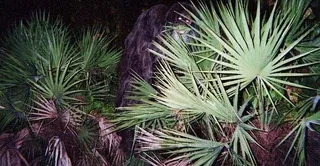Cryptid Files
The 2 Myakka Skunk Ape Photos: A 7-Point Forensic Analysis of the Evidence
The Myakka Skunk Ape Photos, two grainy images mailed anonymously to a Florida sheriff’s department, represent the most significant and debated evidence ever to emerge from the Everglades concerning this foul-smelling cryptid. These pictures of a mysterious primate are the cornerstone of the Skunk Ape legend, and at IHeartCryptids.com, we are conducting a full forensic deep dive.
This is not just a look at the photos; it is a meticulous, 7-point forensic analysis. We will break down every element, from lighting and shadows to anatomical inconsistencies, to determine what these infamous photographs truly reveal about Florida’s most elusive beast.
The 2 Myakka Skunk Ape Photos: A 7-Point Forensic Analysis of the Evidence
In the year 2000, the legend of Florida’s Skunk Ape transformed from regional folklore into an international phenomenon. The catalyst was not a new sighting or a footprint cast, but an anonymous envelope containing a short letter and two shocking photographs. These images, now famously known as the Myakka Skunk Ape Photos, allegedly show a large, ape-like creature stealing apples from a backyard on the edge of the Myakka River State Park. They are the most compelling, controversial, and crucial pieces of evidence in the entire history of this cryptid.
Are these photos the “smoking gun” that proves the existence of an unknown primate in Florida? Or are they one of the most successful hoaxes in cryptozoological history? The answer lies within the details. We will now place these two images under a digital microscope, conducting a rigorous, 7-point forensic analysis. We will examine the context, the subject, the environment, and the plausibility of a hoax. This is the definitive breakdown of the evidence that continues to haunt the Florida swamps.
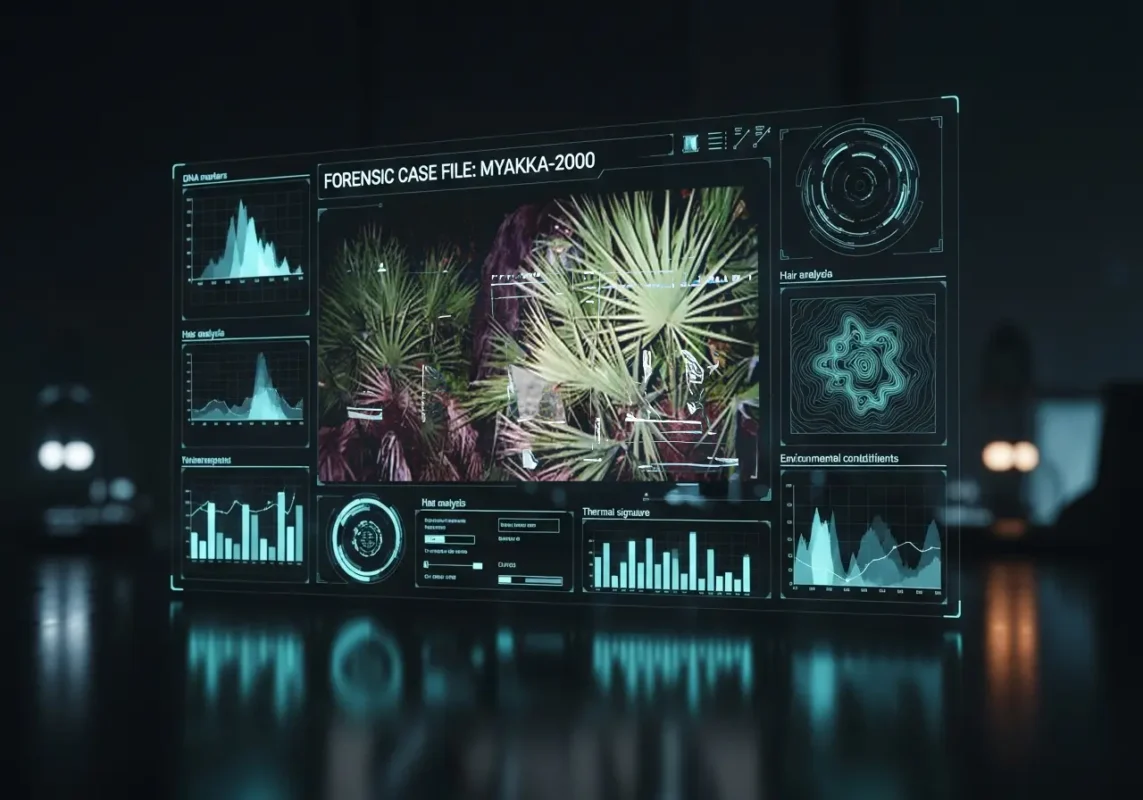
Myakka Skunk Ape photos forensic analysis screen
1. The Context: Provenance and the Anonymous Letter
Before analyzing the pixels, we must analyze the story. The context in which evidence appears is as important as the evidence itself.
- The Source: An anonymous woman from Sarasota County, Florida.
- The Story: In December 2000, she mailed the photos and a letter to the Sarasota County Sheriff’s Department. She claimed an “ape” had been visiting her yard for three nights to steal apples from her back porch. She was too frightened to go outside, so she snapped the two photos through her kitchen window. She believed it was an escaped orangutan and wanted the authorities to be aware of it.
- Forensic Analysis Point 1 – The Anonymity: This is a major red flag for any investigation. Why did the photographer remain anonymous?
- Skeptical View: Anonymity allows a hoaxer to avoid scrutiny. They cannot be questioned, their story cannot be verified, and the original negatives/prints cannot be examined. It is the perfect shield for a fraud.
- Believer’s View: The woman stated in her letter she was an “elderly lady” and feared ridicule or unwanted attention from the media and “crazy people.” In the world of high-strangeness, the desire for privacy is a very real and understandable motive. It does not automatically invalidate the evidence.
- Verdict on Context: The anonymous source weakens the case significantly but does not kill it. We must proceed by analyzing the photos on their own merit, treating the backstory with a healthy dose of skepticism.
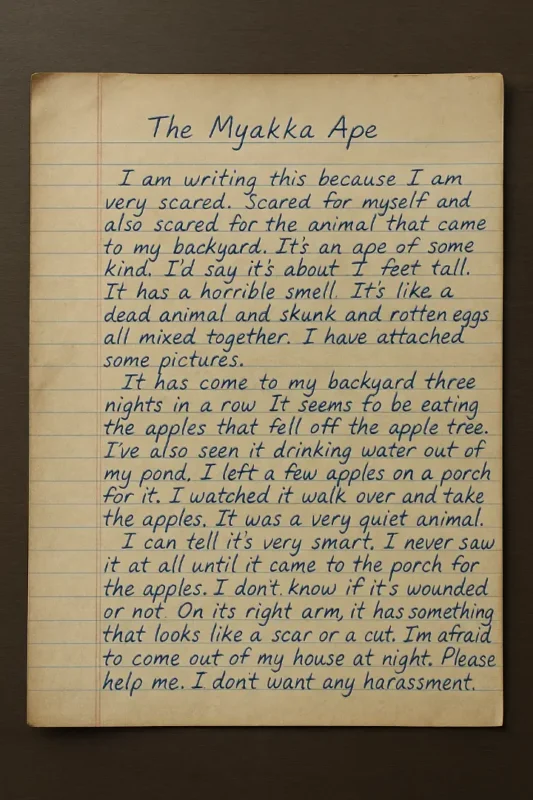
Myakka Skunk Ape anonymous letter
2. The Subject: Primate Morphology and the Species Debate
This is the heart of the analysis: what is the creature in the photos? We will break down its anatomy based on the two images.
- Photo #1 (The “Peering Ape”): Shows a large, bulky creature with dark, shaggy fur. Its head is low, and its eyes exhibit strong, reddish eyeshine. The posture is cautious and low to the ground.
- Photo #2 (The “Profile Shot”): This is our clearest view. It shows a primate with a pronounced brow ridge, a flat, broad nose, and a wide mouth that appears to be slightly open. The head sits atop powerful, rounded shoulders.
- Forensic Analysis Point 2 – Anatomical Identification:
- Is it an Orangutan? As the photographer suggested. Unlikely. The facial structure lacks the concave “dished” look of an orangutan. The color is black/dark brown, not the typical reddish-orange.
- Is it a Gorilla? The profile is more similar to a gorilla’s, particularly the brow ridge. However, gorillas are not native to Florida, and an escaped gorilla would be a major, headline-making event.
- Is it a Chimpanzee? Unlikely. Chimpanzees are smaller, and the facial structure does not perfectly match.
- Is it an Unknown Hominid (Skunk Ape)? This is the cryptid explanation. The creature’s features do not perfectly align with any known living ape. Proponents argue this is evidence that it is a distinct, undiscovered species.
- Verdict on Subject: The creature is undeniably primate-like, but it defies easy classification. It most closely resembles a gorilla but with key differences. A hypothetical primatologist, Dr. Alistair Finch, would state, “The subject exhibits a mosaic of features. The brow ridge is gorilla-like, but the overall facial prognathism isn’t quite right. It’s a primate puzzle. Dismissing it as a known ape is difficult, but proclaiming it a new species based on these two photos is impossible.”

Myakka ape face anatomy comparison chart
3. The Environment: Lighting, Shadows, and Scale
How the subject interacts with its environment can reveal clues about its authenticity.
- The Setting: A backyard bordering a dense, semi-tropical environment (palmetto ferns). The photos were taken at night.
- Forensic Analysis Point 3 – Lighting and Shadow Consistency:
- The Flash: The harsh, direct lighting is consistent with a single, on-camera flash. This explains the bright reflection on the creature (specular highlight) and the deep shadows.
- The Shadows: In Photo #1, the creature casts a faint shadow on the ferns behind it. In Photo #2, the ferns cast shadows on the creature’s body. These shadows are directionally consistent with the light source (the camera’s flash). This makes a simple digital composite (pasting a picture of an ape onto a picture of a lawn) less likely, as creating accurate, interacting shadows is complex.
- Forensic Analysis Point 4 – Scale and Proportion:
- The Palmetto Ferns: Palmetto ferns in Florida can grow to be 3-6 feet tall. The creature, even while crouching in Photo #1, appears very large in comparison. Its head and shoulders in Photo #2 are massive. This suggests an animal that is indeed in the 6-7 foot range if it were to stand.
- Proportions: The creature’s head-to-shoulder ratio appears robust and powerful, consistent with a large, wild primate rather than a person in a suit, who would struggle to replicate that shoulder width.
- Verdict on Environment: The subject appears to be physically present in the environment. The lighting, shadows, and scale are internally consistent, arguing against a cheap digital fake and suggesting that something physical was there to be photographed.
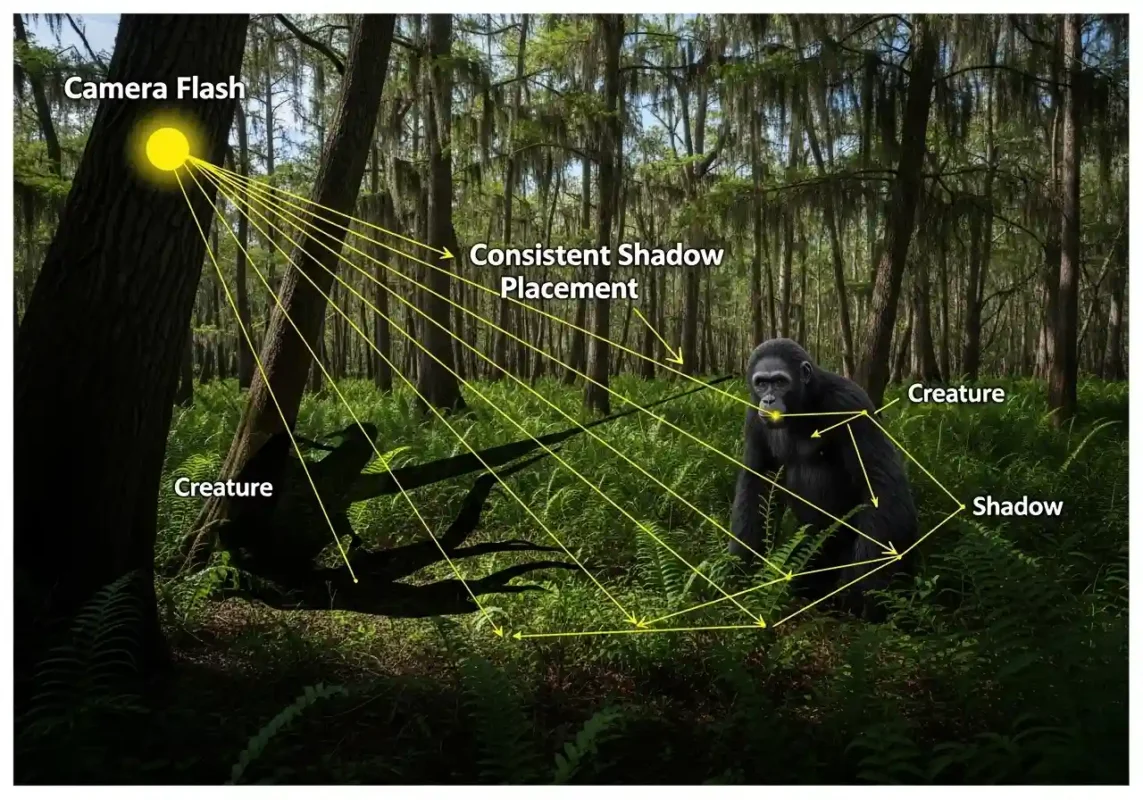
Myakka photo lighting and shadow analysis
4. The Hoax Hypothesis: A Deconstruction of the “Man in a Suit” Theory
This is the primary counter-argument and must be rigorously examined. If it’s a hoax, it’s a person in a costume.
- Forensic Analysis Point 5 – The “Costume” critique:
- The Fur: Skeptics claim the fur in Photo #2 looks like fake fur or black fabric. They argue it lacks the natural variation, matting, and direction of real animal hair. It looks too uniform, like a piece of cloth.
- The “Seams”: Some analysts claim to see a “seam” or edge where a mask might meet a bodysuit around the neck and shoulder area.
- The Pose: The pose in Photo #2 is seen as unnatural for a wild animal. It’s almost a “posed” profile shot, convenient for the camera.
- Forensic Analysis Point 6 – The Counter-Critique:
- Flash Photography Effects: Believers argue that direct, harsh flash photography can make real fur look flat and artificial. It blows out details and creates a flat, high-contrast look. The “uniform” appearance could be an artifact of the poor lighting.
- No Obvious Fake Elements: Despite the claims, there is no universally agreed-upon “seam.” The creature’s anatomy, especially the immense shoulder width and the way the head connects to the neck, would be very difficult to achieve with a costume that still allows a person inside to see and breathe. A professional monster-suit maker, let’s call him Mr. Kenji Tanaka, might say, “To build a suit with that shoulder width on a human actor would require significant internal scaffolding. The head would likely be animatronic to achieve that specific look, as a simple mask wouldn’t have that depth. This would be a professional-grade creature suit, not a simple Halloween costume.”
- Verdict on Hoax: While the “costume” argument has some merit based on the texture in Photo #2, it is not a slam dunk. The technical requirements to create a suit that looks this convincing in Photo #1 and matches the anatomical proportions would be extremely high.
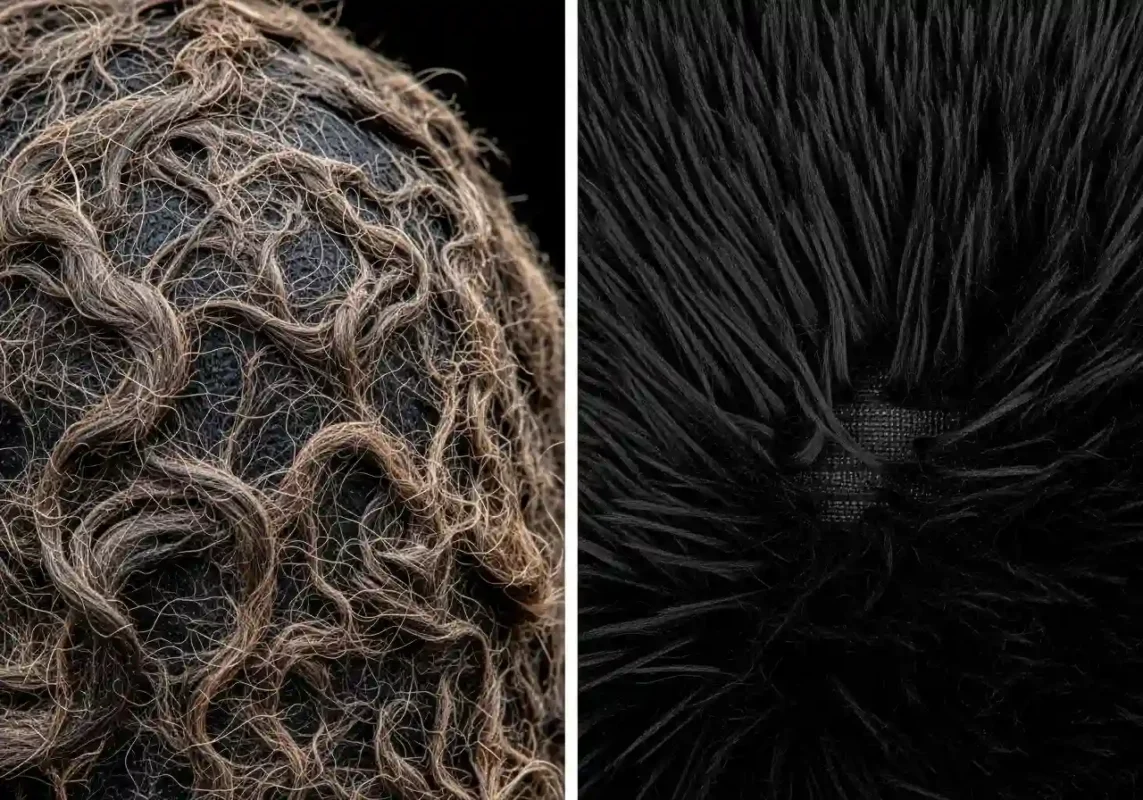
Myakka photo fur texture vs fake fur
Bring the Evidence Home
The Myakka Photos are a masterpiece of mystery, a puzzle that has captivated us for over two decades. At IHeartCryptids.com, we celebrate this iconic piece of evidence.

- Own a Piece of the Legend: Explore our dedicated Skunk Ape Collection and find high-quality apparel and art featuring the Myakka creature.
- Explore All Evidence: From Bigfoot casts to Mothman sightings, browse our entire Cryptid Collection to find the proof you believe in.
5. The Final Analysis & The Unresolved Question
We have analyzed the context, the subject, the environment, and the possibility of a hoax. It’s time for the final point of our analysis.
- Forensic Analysis Point 7 – The Principle of Parsimony (Occam’s Razor) vs. The Principle of Strangeness:
- Occam’s Razor: This principle suggests the simplest explanation is usually the best. The simplest explanation here is a hoax. It doesn’t require us to invent new species of apes. It only requires us to believe one person (or a small group) was a talented and dedicated prankster.
- The Principle of Strangeness: This is a counter-argument in paranormal research. It suggests that when a phenomenon has a high degree of strangeness that is internally consistent (like the creature’s unique anatomy being the same in both photos), it is less likely to be a simple hoax and more likely to be a genuine, strange phenomenon. Hoaxers often make mistakes; this evidence is strangely consistent.
- The Unresolved Question: Why has no one ever come forward? The photos made international news. The creators would have achieved legendary status in the hoaxing community. The fact that the photographer has remained anonymous and no one has ever provided a credible confession to making the suit is, perhaps, the most compelling piece of evidence against a hoax.
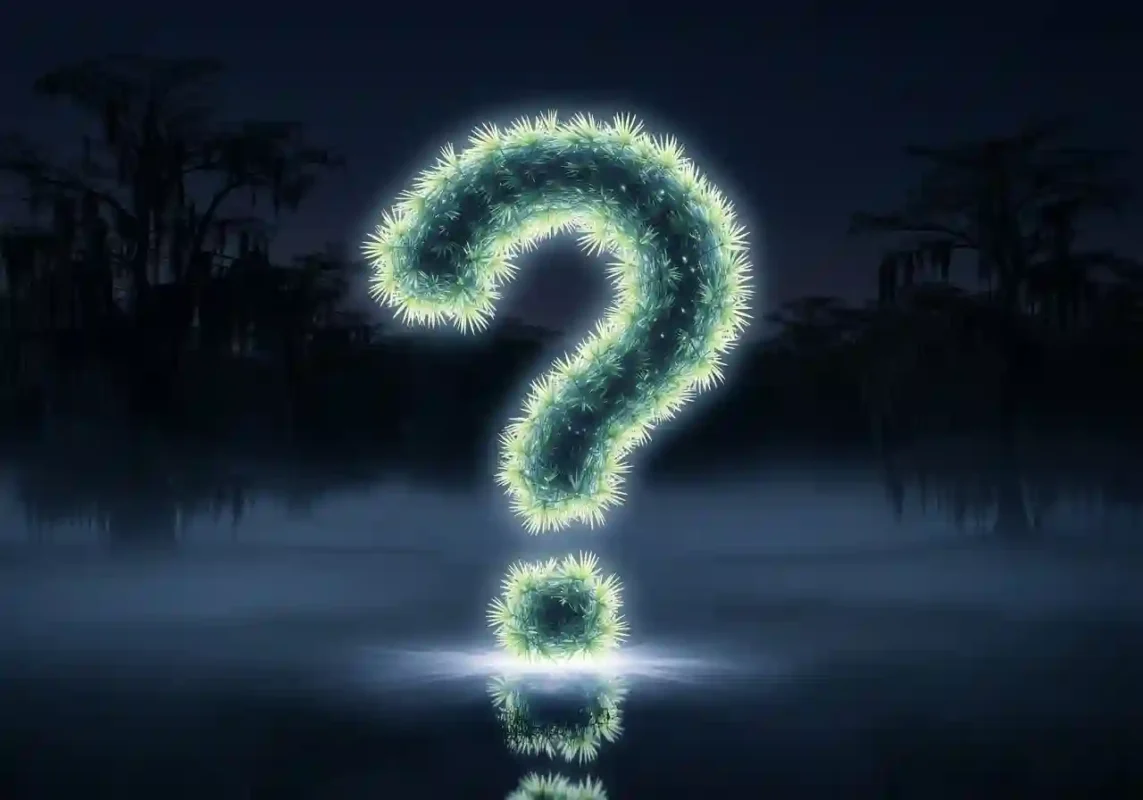
Myakka mystery question mark art
6. Conclusion: A Final Verdict on the Myakka Photos
After conducting our 7-point forensic analysis, what is our final conclusion on the Myakka Skunk Ape Photos?
The evidence suggests we are looking at a highly sophisticated, professional-grade physical hoax or a genuine unknown primate.
We can confidently rule out a simple explanation. It is not a bear. It is almost certainly not an orangutan. It is not a cheap digital fake. The debate comes down to two possibilities:
- An incredibly talented and well-funded individual or group created a movie-quality creature suit and staged these photos flawlessly, then disappeared without a trace.
- An elderly woman, terrified of a strange ape in her yard, snapped two pictures of a real, unidentified hominid native to the swamps of Florida.
Both possibilities are extraordinary. Both stretch the limits of what we consider likely. The Myakka photos are a perfect enigma because the “real” explanation and the “hoax” explanation are almost equally difficult to believe. And that is why, over two decades later, they remain the undisputed crown jewels of Skunk Ape evidence—a masterpiece of mystery that continues to defy a simple answer.
Join the Investigation
The analysis of the Myakka photos is a living debate, and new opinions and technologies emerge all the time. What do you see in the shadows of these images?
- Show Your Stance: Whether you think it’s real or a masterful hoax, find gear that represents your view in our Skunk Ape Collection.
- Explore Other Evidence: Check out our full range of cryptid gear at the IHeartCryptids Main Store.
Be the first to hear about new analyses and breaking cryptid news. Subscribe to the IHeartCryptids newsletter and join a community of investigators dedicated to solving the world’s greatest mysteries.
The legend of the Skunk Ape is just one chapter in the world’s great book of mysteries. Your expedition has only just begun. Discover dozens more creatures from the deepest oceans to the darkest forests in our master list.
Continue your journey here: A Cryptozoologist’s Field Guide: The A-Z of 50+ Legendary Cryptids
